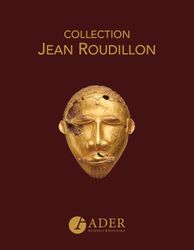
Thursday 06 Jun at
: 16:00 (CEST)
Jean Roudillon Collection
We are sorry, the auction is over.
Exhibition of lots
jeudi 06 juin - 11:00/12:00, Salle 9 - Hôtel Drouot
mercredi 05 juin - 11:00/18:00, Salle 9 - Hôtel Drouot
mardi 04 juin - 11:00/18:00, Salle 9 - Hôtel Drouot